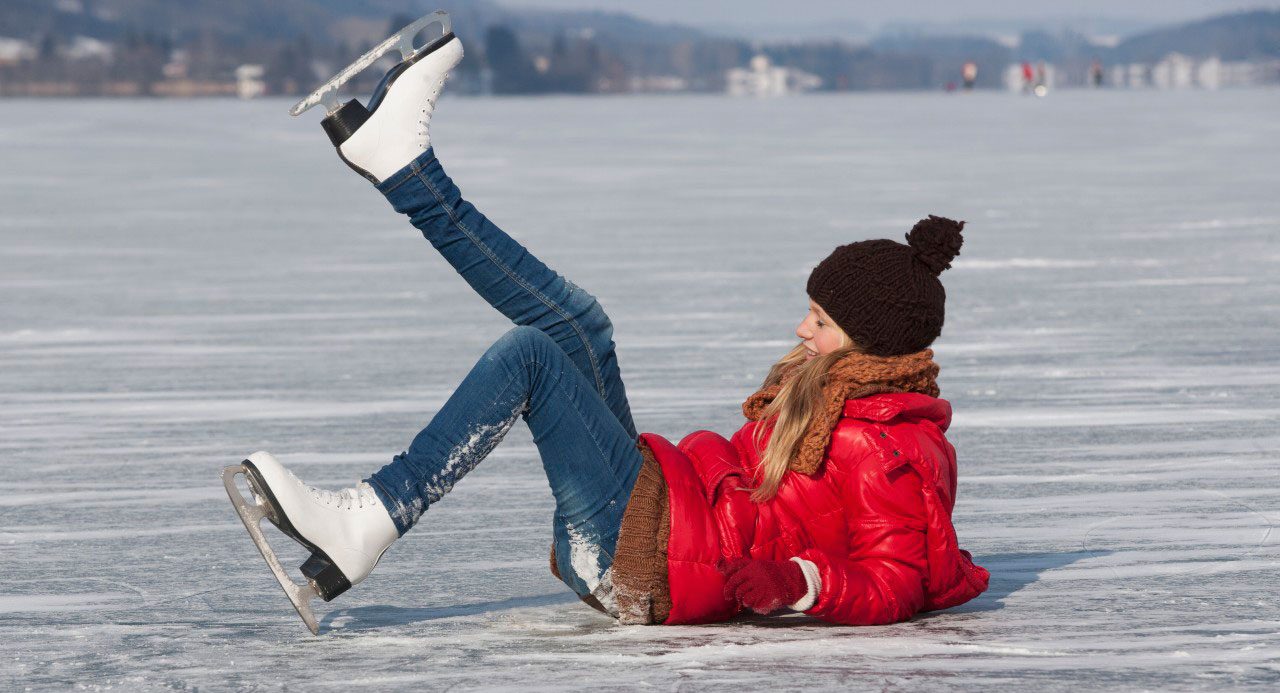How to Prevent Winter Slips and Falls

Don’t let snow and ice trip you up this season. Check out our tips for avoiding and preventing slips and falls this winter.
You’re walking, eyes focused straight ahead, when – wham! Your legs fly out from under you and you find yourself staring up at the sky – and feeling a lot of pain. When ice and snow coat the ground, even the most carefully planned footsteps can lead to slips that break or fracture a bone, or cause a serious head injury. With a few precautions, you can avoid taking a spill this winter.
Preventing slips and falls
“You can’t have someone walking in front of you with salt and a shovel, so you have to use common sense and try to prevent falls,” said Joseph Gallagher, PT, DPT, manager of rehabilitation education for the Visiting Nurse Service of New York.
Start by salting or sanding the sidewalks and driveways around your house. This will improve traction on the walkways you use the most.
If you can’t avoid being outside when the ground is snowy or icy, put on the right shoes before you leave the house. “Proper footwear and awareness of where you’re stepping will help you avoid falls and injury,” says Paul Peters, MD, an orthopaedic foot and ankle specialist in Dayton, Ohio. Wear low-heeled or flat boots with rubber soles. They should have grooves to give you a better grip on slippery surfaces.
As you walk, look out for not only visible ice and snow, but also for black ice, which is clear and easy to mistake for a wet spot on the pavement. If you’re not sure whether a spot is black ice or pavement, walk around it to be safe. Grab on to a railing, if one is available. Be especially careful to watch your step and hold on when you go up or down stairs.
Enlist some help so you don’t have to navigate a slippery sidewalk alone. “If you are a little unsteady, ask someone to go with you when you go out, such as a neighbor or family member,” said Gallagher. “They can give you extra support, which could prevent a fall from happening.”
Walk slowly. Take shorter steps than usual, and bend at your knees to give your body more support. “A lower position of gravity can keep you more stable,” said Gallagher. “You may look a little funny walking, but you’ll have a better chance of staying on your feet.”
Strengthen your leg muscles, and practice balance exercises (such as standing on one leg) ahead of the winter season. You’ll be less likely to fall in the first place, and you’ll have an easier time getting up if you do fall. Before going outside in icy conditions, stretch your muscles and joints to loosen them up. Warm muscles are less likely to get sprained or strained if you do fall.
Once you get inside, dry off your boots. Trying to navigate a wood or tile floor with ice and snow still on the bottom of your shoe can be treacherous.
Finally, see an eye doctor regularly to have your vision checked. People with vision loss are nearly twice as likely to fall than those with clear sight.
If you do slip and fall
Even with precautions, sometimes falls are unavoidable. Losing your balance can feel scary, but try to relax your body. Tensing up can increase your risk of getting hurt. If you start to fall forward, roll into the fall to minimize injury. If you start to fall backward, sit down.
Once you have your bearings again, assess your injuries. Some injuries, like a concussion or broken bone, require immediate medical attention. Others are less clear.
If you hurt an arm, leg, or ankle during a fall, apply ice and elevate the affected limb. Call a doctor or go to a clinic if the limb is swollen, painful when you put pressure on it, or numb. “When you have an injury, being evaluated and treated early can help lessen the pain and speed your recovery,” Peters said. “Proper treatment of a sprain or fracture can also help avoid long-term problems such as chronic pain and instability.”
Updated:
March 30, 2020
Reviewed By:
Janet O’Dell, RN